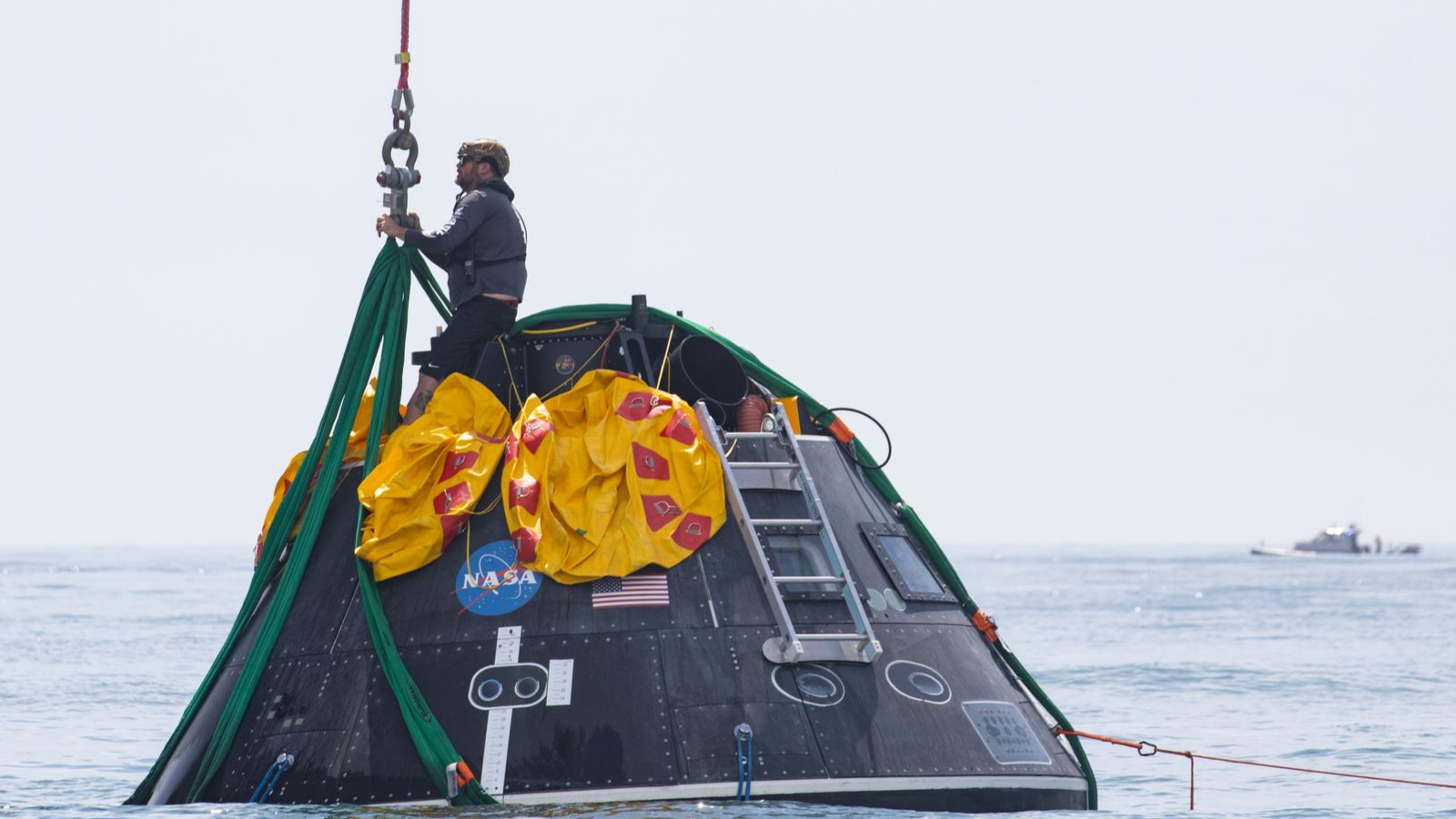
SpaceX's latest Starship prototype fired its engines for the fourth time on Tuesday evening (Nov. 24), keeping the vehicle on track for a landmark test flight next week.
The Starship SN8 prototype performed its fourth "static fire" test at 6:23 p.m. EST (2323 GMT) Tuesday at SpaceX's South Texas facility, near the seaside village of Boca Chica.
Static fires, in which engines briefly blaze up while a vehicle remains bolted to the ground, are common preflight checkouts for SpaceX rockets. And SN8 ("Serial No. 8") is indeed gearing up for a flight — a test that will take it to a target altitude of 9 miles (15 kilometers), far higher than any other Starship prototype has gone.
Related: Starship and Super Heavy: SpaceX's Mars-colonizing vehicles in images
Tuesday's test kept SN8 on target for that milestone leap, SpaceX founder and CEO Elon Musk said.
"Good Starship SN8 static fire! Aiming for first 15km / ~50k ft altitude flight next week. Goals are to test 3-engine ascent, body flaps, transition from main to header tanks & landing flip," Musk tweeted Tuesday evening, about 45 minutes after the test occurred.
Starship is SpaceX's next-generation space transportation system, which the company is developing to take people and payloads to Mars and the moon, launch satellites to orbit and do everything else that SpaceX needs done.
Breaking space news, the latest updates on rocket launches, skywatching events and more!
The final version will consist of a 165-foot-tall (50 meters) spacecraft called Starship and a giant rocket called Super Heavy, both of which will be fully reusable. Starship and Super Heavy will be powered by SpaceX's new Raptor engine, which burns liquid methane and liquid oxygen. Starship will sport six Raptors, and Super Heavy will have about 30 of the engines, Musk has said.
The first Super Heavy prototype has not yet been built. But SpaceX has already constructed and tested a number of Starship test vehicles, three of which have already taken flight. A stubby craft called Starhopper flew in the summer of 2019, and SN5 and SN6 got off the ground this past August and September, respectively.
All three of those prototypes were single-engine craft, and they reached a maximum altitude of about 500 feet (150 m). SN8 will go much higher and is therefore quite different than its predecessors, boasting three Raptors as well as a nose cone and stabilizing body flaps.
Starhopper, SN5 and SN6 aced their brief test flights. Musk isn't giving SN8 great odds of doing the same, though he said it won't be a disaster if the vehicle crashes and burns.
"Lot of things need to go right, so maybe 1/3 chance," he tweeted Tuesday evening. "But that’s why we have SN 9 & SN10," he added in another tweet.
SN8's previous three static fires occurred on Oct. 20, Nov. 10 and Nov. 12. The third test didn't go as planned; the Raptors' ignition shattered the top layer of the test pad, sending shards of material into the engine bay and causing a premature shutdown, Musk explained in a tweet last week.
But SN8 bounced back quickly, and it will soon fly high, if all goes according to plan.
Mike Wall is the author of "Out There" (Grand Central Publishing, 2018; illustrated by Karl Tate), a book about the search for alien life. Follow him on Twitter @michaeldwall. Follow us on Twitter @Spacedotcom or Facebook.
Join our Space Forums to keep talking space on the latest missions, night sky and more! And if you have a news tip, correction or comment, let us know at: community@space.com.

Michael Wall is a Senior Space Writer with Space.com and joined the team in 2010. He primarily covers exoplanets, spaceflight and military space, but has been known to dabble in the space art beat. His book about the search for alien life, "Out There," was published on Nov. 13, 2018. Before becoming a science writer, Michael worked as a herpetologist and wildlife biologist. He has a Ph.D. in evolutionary biology from the University of Sydney, Australia, a bachelor's degree from the University of Arizona, and a graduate certificate in science writing from the University of California, Santa Cruz. To find out what his latest project is, you can follow Michael on Twitter.
